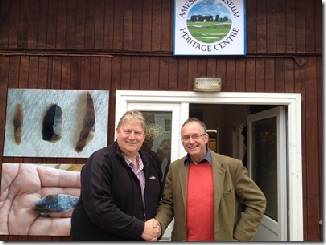
Small Museum -
Nearly a year ago I approached Amesbury to see if there was any way that our Druid grove could be helpful to the community. At the time a new Mayor had been elected, Andy Rhind Tutt, and like ourselves he saw that Amesbury had huge potential as yet unrealised. Amesbury has great people, world class history and a lively culture yet almost nobody knew of this, so as recession continued to bite and businesses suffer ‘Amesbury 2012’ initiative was launched.
The idea was to explore Amesbury heritage and riding with the energy of an Olympic year, change things permanently for the better. Fortunately the Amesbury heritage trail and lantern parades were very popular and people started to believe that we in Amesbury have very good reason to attract visitors to the town.
Recently, Melor hall was purchased by the town council from the church, and this will be the site of the new museum. Huge credit must go to Andy, but also to the 2012 committee and the town council for the foresight and resolve to make this happen. Not only do we hope that the museum will allow Amesbury to showcase its wonderful history and bring new visitors into the town, there will be another happy side effect:
For very many years Archaeologists and antiquarians have been digging up human remains, animal bones, pots and flints from Stone age sites around Amesbury and all of this ends up being removed from the community and sacred Stonehenge landscape. This is wrong. Usually, local people do not even get to see their heritage before it is carted away forever.
Now that will change and there is every reason to hope that some of the greatest finds will return to Amesbury to reside as close as possible to the places from which they were taken.
It is still a long way into the future, but already there have been ideas shared with the council sympathetic to the display of human remains in a ‘shrine context’ rather than the usual cold display. I welcome this. Where remains are too precious to be reburied, at least we can honour them as people at rest and with all dignity due to them as ancestors, and keep them in the sacred landscape.
Just imagine if we could bring the ‘Amesbury Archer’ home.
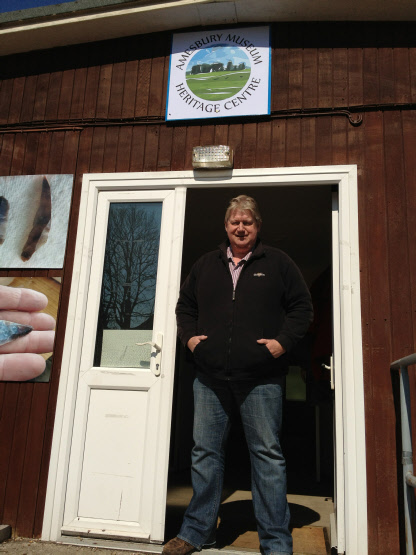
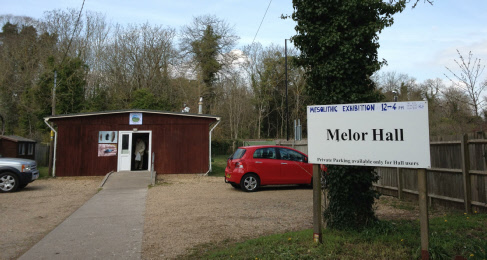
Pictured below, Andy Rhind Tutt at the entrance to the old Melor Hall building.
Apart from the Mesolithic theme to the exhibition, one of the first things that I noticed upon entering the hall were illustrative plans for the new museum building:
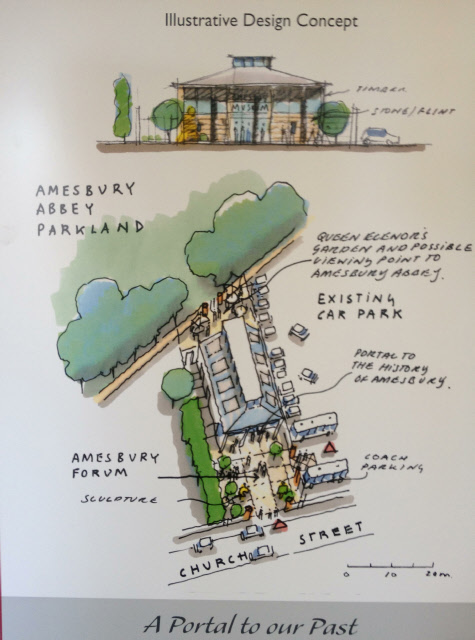
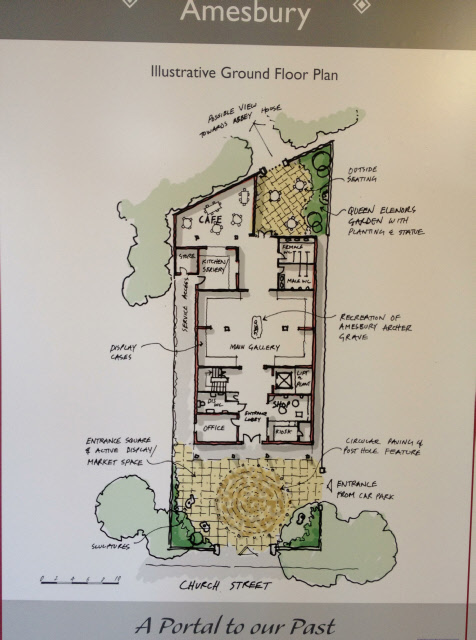
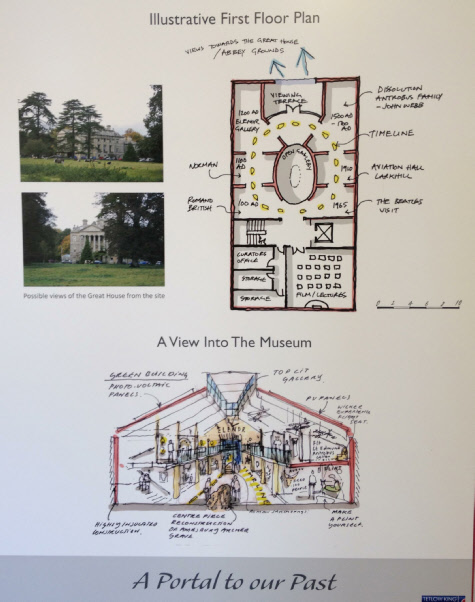
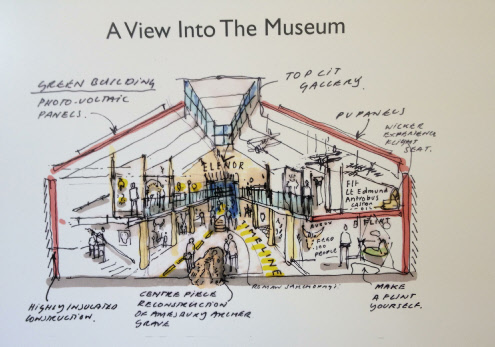
The purpose built two story structure envisaged would be light and spacious with zones covering the ancient aspects of our past through to the most recent. There will be a lecture room and cafe area also.
Now to talk about the Mesolithic exhibition, and oh boy, were we in for a treat!
David Jacques, and his small team of volunteer archaeologists presented the results
of ten small excavations he directed with over 100 of his students at Amesbury, Wiltshire,
2005 -
The work has resulted in the discovery of a site, situated about a mile from Stonehenge,
which has been described as being “potentially one of the pivotal places in the history
of the Stonehenge landscape” by an inspection team from English Heritage. The uncovering
of the earliest settlement ever found in the Stonehenge landscape is the stand out
discovery, but the fact that the site also provides evidence for ritual activity
in the Neolithic, Bronze Age, Iron Age and Romano-
The walls of the museum were covered with pictures illustrating Mesolithic life, and of the dig site. The auroch hunting scene and family breakfast were provided by myself as a gift to the museum from the Druids.
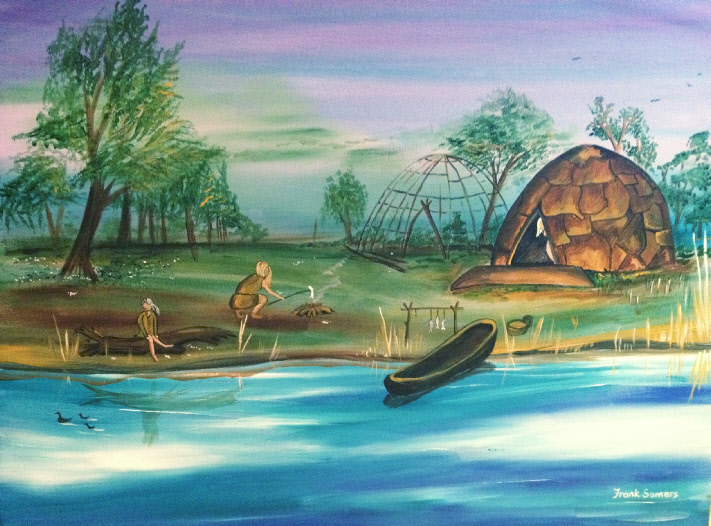
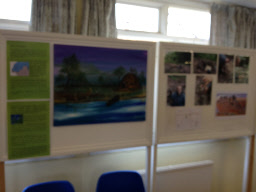
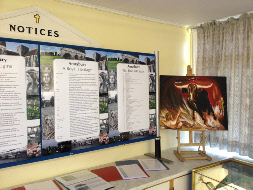
This was a time of peace and plenty, with the population of Britain and Ireland at less than 20000 people. Not a mortgage or a taxman to worry about.
David brought in a ‘small selection’ of finds from the dig site, here being looked at by visiting Professor Tim Darvill:
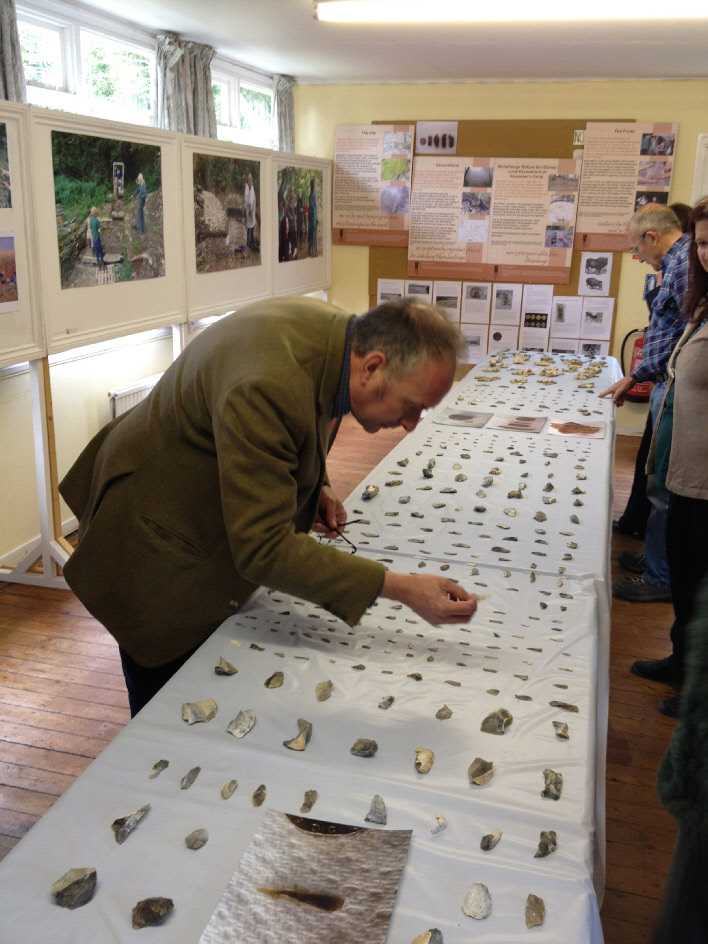
Mesolithic finds are normally as rare as hens teath and just a handfull would make a very happy finds team. At this site however, there have already been more than 10000 found from just one small trench, with a second located around 20 yards away just starting to deliver a similar quantity.
If this continues then this will quickly become one of the top two, if not the richest Mesolithic site in Britain.
The reason for the shear wealth of finds has far reaching significance but I will return to that topic later.
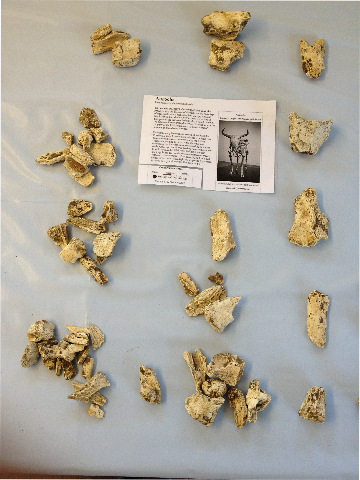
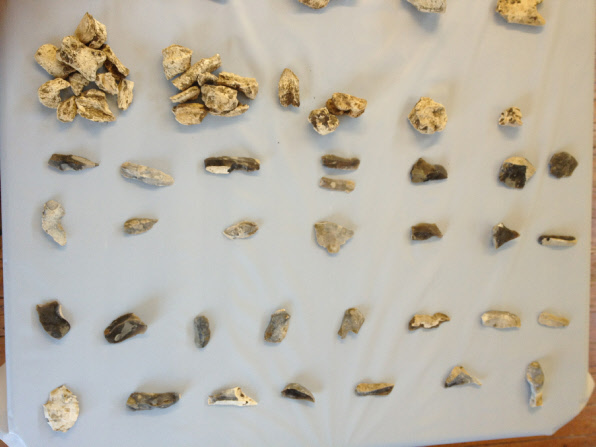
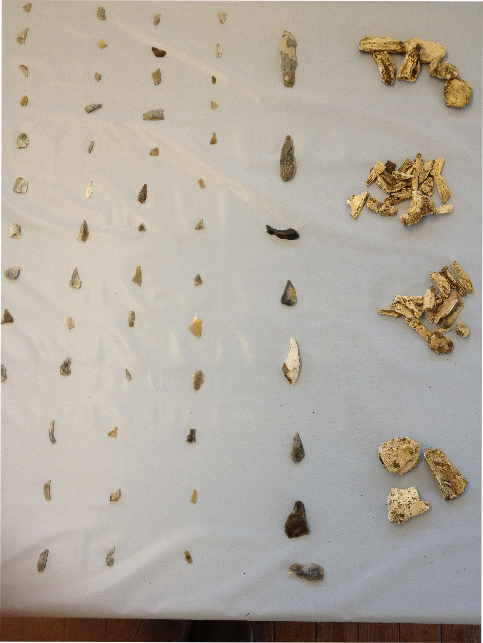
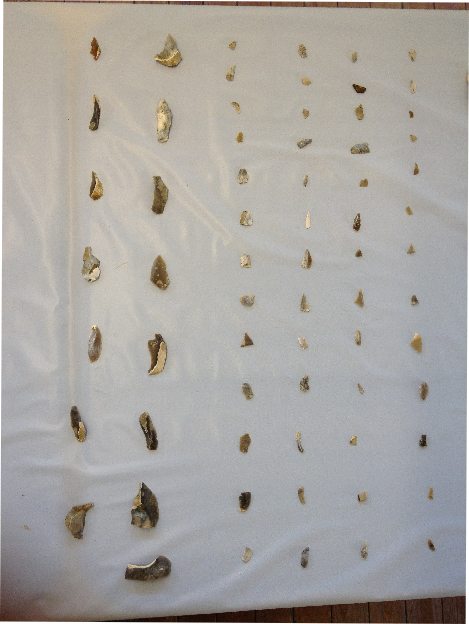
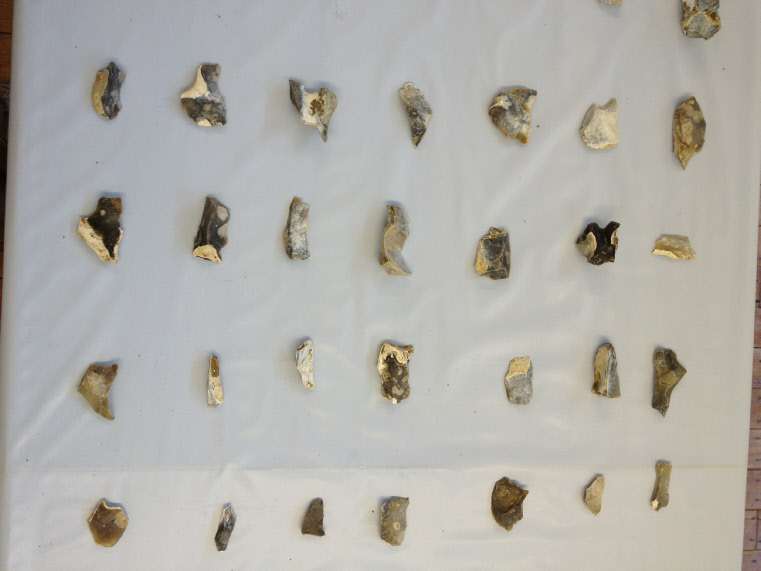
Just a small selection!
There are a significant number of Auroch bones. These mighty ancestors of the cow were nearly twice the size of a modern bull and were very fierce animals.
The smaller flints were mainly hunting tools, the larger flints were largely for domestic usage preparing meat, clothes etc.
Most are ether hardly used or ‘as new’ and still exceptionally sharp after nearly 10000 years.
David and his team produced these world class finds on a budget of just a few thousand pounds. It is shocking to me that we have Government Departments for Culture, and English Heritage, both there to secure our legacy yet great work like this is left to struggle.
When I think of the Stonehenge revenue money that gets poured into managing a mass party at summer solstice every year whilst important work like this gets so little help...
I am hoping soon to be able to post up videos of the lectures about this dig so that the archaeologists may speak for themselves to you of their amazing discoveries, but for now you must please bear with me as I do my best to describe to you what I learned from these lectures and from visiting the dig site.
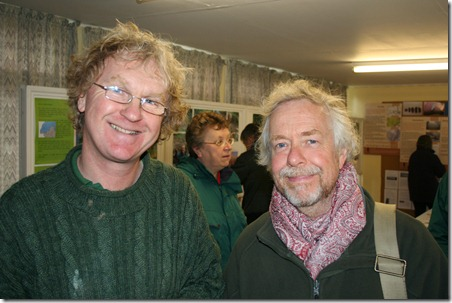
Left, David Jacques on the left of the picture beside another interested archaeologist of high renown, Julian Richards.
More than 600 tourists and locals passed through the doors of the Melor Hall to see the 1000 plus pieces of worked flint, cooked flint and Aurochs bones all found within a stones throw of the Hall and over the four afternoons the exhibition was open, the Country’s leading archaeologists, Mesolithic Experts, Flint Experts, Bone Experts, Bronze Age Expert and a leading Geologist descended on Amesbury to see the site, explore the finds and present talks at the Hall on how Amesbury can now claim to be the “cradle” of Stonehenge and has evidence of life within the same location for more than 8250 years.
Each of the 8 talks given told the story so far and highlighted how internationally important the finds are. David Jacques, the project director for the archaeological digs who gave a few of the talks stated that in Academia the question has always been “Why is Stonehenge, where it is?”. The answer he was pleased to state and which also came unanimously from all of the experts visiting appears to be “Amesbury” as the findings now show that Amesbury was a place of residence more than 3000 years before Stonehenge was built and aligns closely with the dates of the three Totem poles found in the Stonehenge car park.
During the weekend however, more excitement unfolded when four Horsham Points were found, which may indicate travellers to the area at a much earlier dateline (7th Millennia BC)!
From the visitors book some people had come from far afield to see the exhibition and on the Visit Amesbury Facebook page some glowing comments were left. Professor Timothy Darvill and Julian Richards, both paid visits and Kate Bentley – America’s Senior Cultural Attaché (3rd most senior person in the Embassy) from the US Embassy spent the whole weekend in Amesbury.
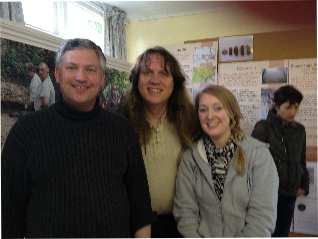
Above centre, Stonehenge and Amesbury senior Druid ‘Frank’ pictured alonside archaeologists from Cambridge Uni, Dr Tom Lyons
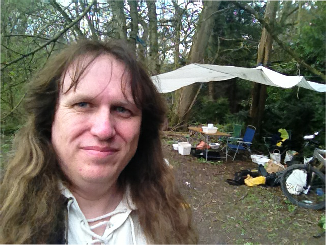
More to follow shortly....
